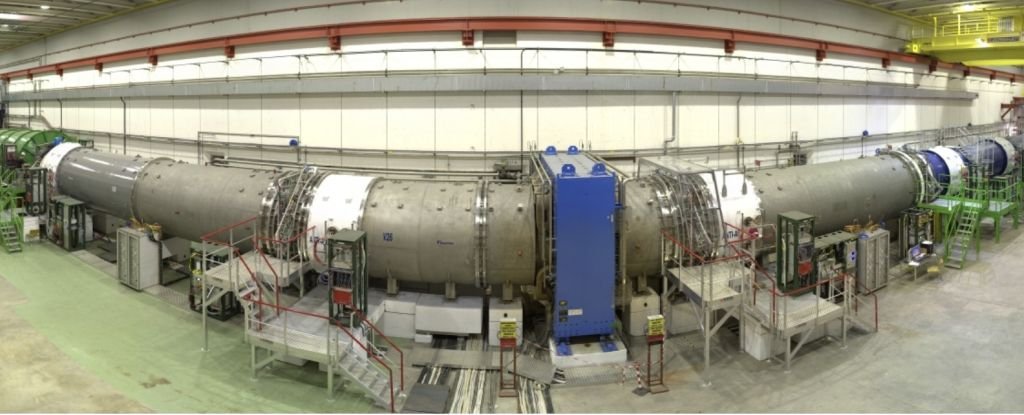At the CERN particle collider, scientists have made an incredible observation that might edge physics closer to the unknown terrains beyond the established theories.
This comes from years of persistent work on the NA62 experiment led by a team of physicists, including Cristina Lazzeroni from the University of Birmingham.

Their recent findings confirmed the decay of a charged kaon into a charged pion, along with a neutrino-antineutrino pair, as presented at a recent CERN seminar.
The intrigue in this discovery lies in its rarity and strict adherence to the predictions of the Standard Model of physics—a successful yet incomplete framework we use to describe subatomic particles and their interactions.
The so-called “golden” decay channel is not only elusive but also serves as a precise measure for spotting new physics phenomena.
Over a decade, the researchers accumulated vast amounts of particle collision data to achieve this milestone, meeting the critical ‘five sigma’ standard, the benchmark for statistical certainty in the field.
“This difficult analysis is the result of excellent teamwork, and I am extremely proud of this new result,” says Lazzeroni, underscoring the collaboration’s achievement.
Kaons are intriguing particles consisting of a quark and a different quark antiparticle.
Their rapid decay into other particles, like the massive muon and neutrinos, occurs in a fraction of a second.
However, very rarely, kaons decay into an antineutrino, a neutrino, and a pion, a particle formed from another quark-antiquark pair.
The rarity of this process stems from its complex mechanism involving a change in quark flavor, facilitated by Z bosons, further contributing to its rarity.
The success of observing this decay underlines the progress achieved by CERN’s Super Proton Synchrotron, which bombards a stationary target to produce a continuous stream of particle interactions.
One primary challenge was disregarding countless other kaon decay particles, or ‘background,’ to isolate significant cases of the rare decay into pi+ and nothing else, using the charged pion as the pivotal clue.
With their initial findings in 2019 not yet meeting the statistical certainty level, the team has now achieved this landmark.
The number of observed kaon decays slightly surpasses the predicted 8.4 per 100 billion, staying within accepted uncertainty margins.
Future deviations in these figures could signal breakthroughs beyond the confines of the Standard Model.
Lazzeroni highlights shortcomings of the Standard Model, including its exclusion of dark matter or the significant matter-antimatter imbalance required by our universe’s structure.
She hints at forthcoming discoveries, expecting new particles or forces beyond known physics.
As NA62 amasses further data over the next three years, researchers hope to confirm or challenge the Standard Model’s predictions.
These observations at CERN ignite a thrilling prospect of unveiling unprecedented facets of physics that lay beyond our current understanding.
